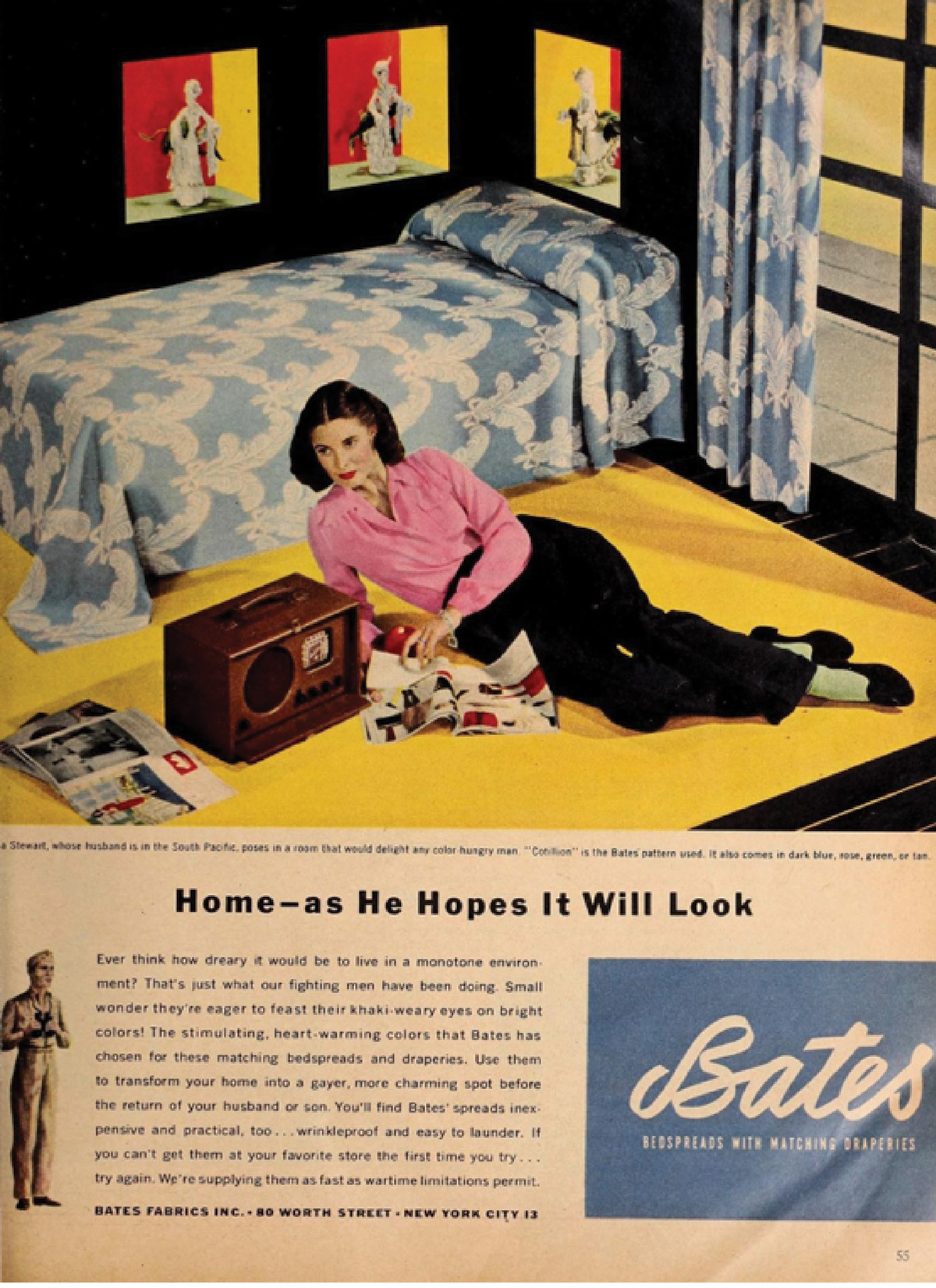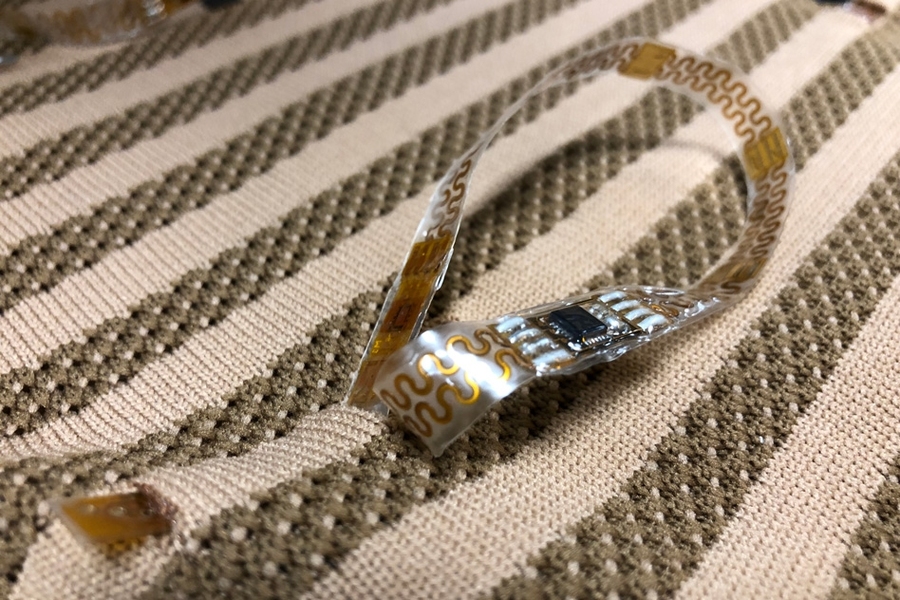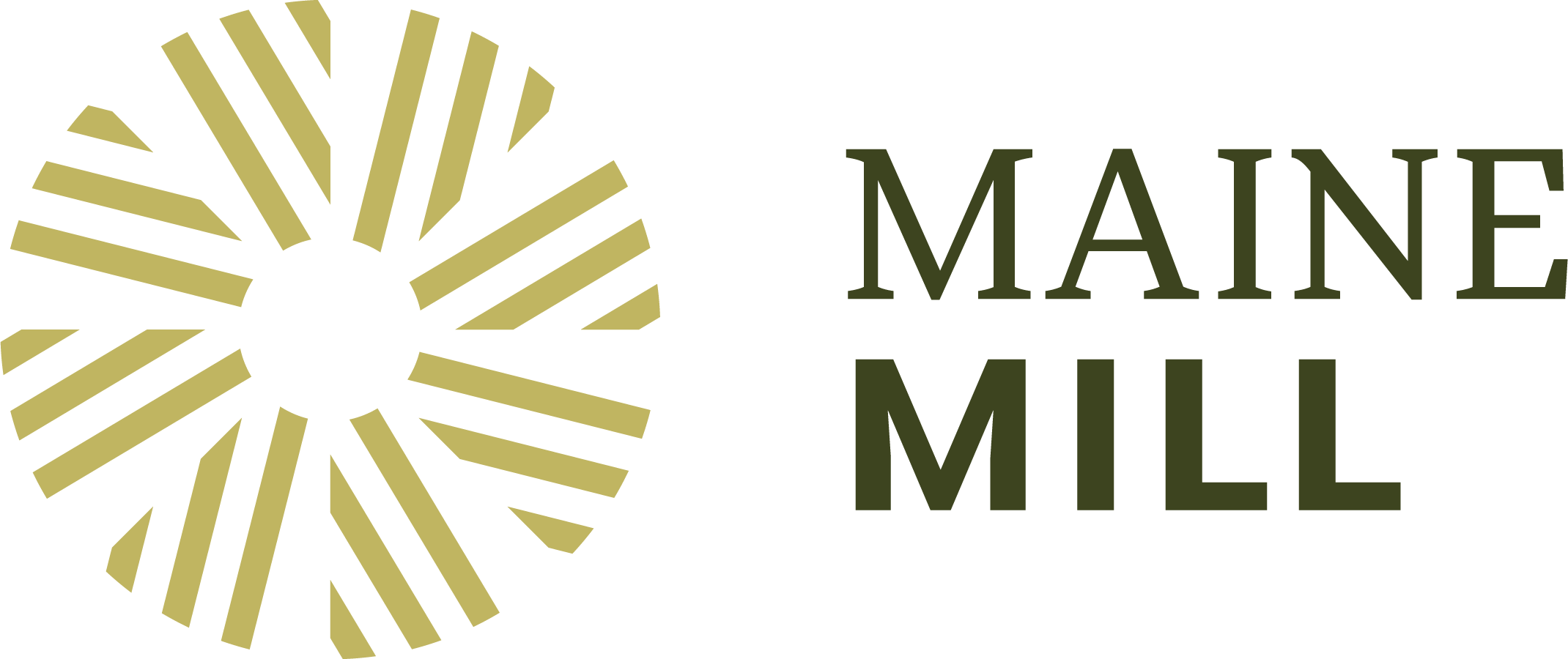Learn
Textile Manufacturing
Materials for Living
Textiles have been made for centuries, first only by hand and then aided by machinery, like looms. Textiles are made by weaving, knotting, tying, twisting, looping, hooking or braiding thin or loose fibers together to make a tight and connected material. The material end product is useful in that it can be cut and shaped into something to wear, like a pair of jeans or a t-shirt or even something to keep us warm, like a blanket.
There are lots of types of textiles: cotton and wool are natural textiles where rayon and polyester are “man-made.” Of the two natural materials, their origin is really different. Cotton is grown in fields, picked and processed. Once processed it’s sent to mills, like those that have stood in Lewiston and Auburn since 1834, to make cotton fabric, blankets, and more. Wool is produced on the backs of fuzzy sheep. They are fed, raised, sheared, and their wooly hair is worked into yarns and threads which, like cotton, can make fabrics to produce (itchy yet warm) clothes.
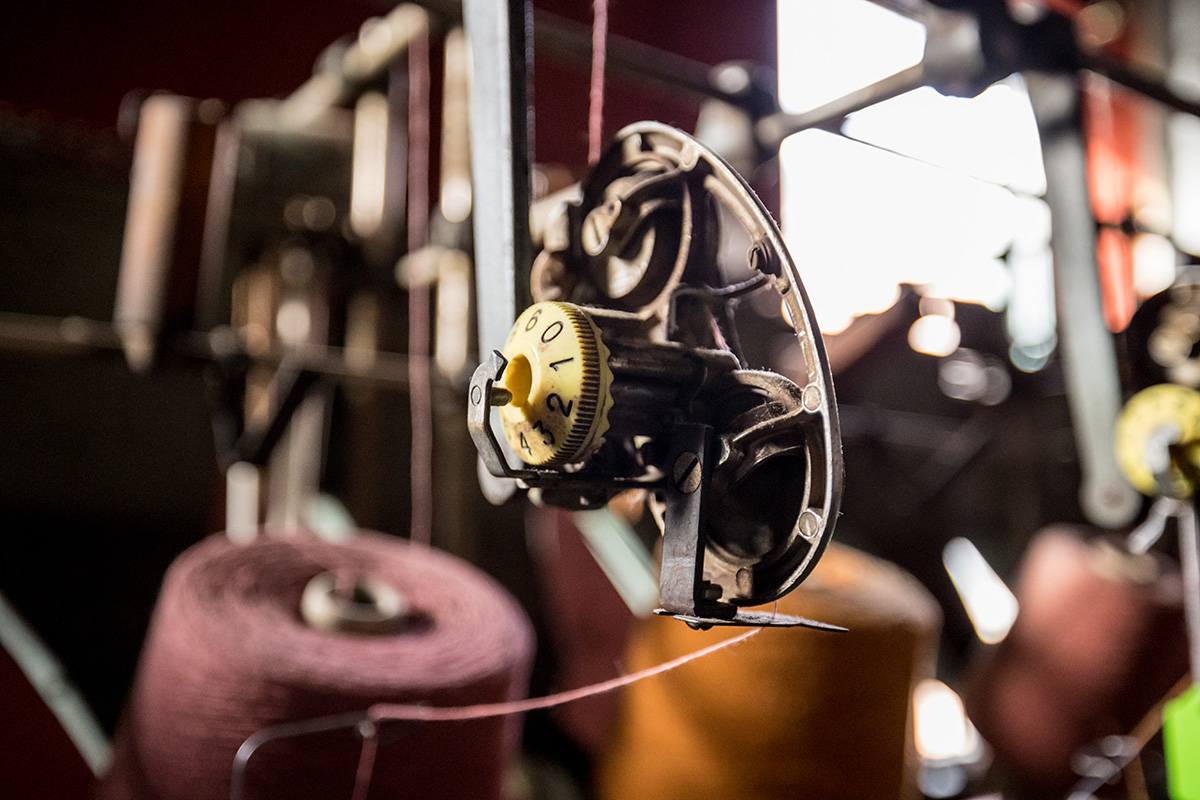
Can you identify the different types of textiles?
(hover to reveal the answer)
Cotton: From Field to Fashion Wear
Maine is many miles away from the “cotton belt,” made up of southern states like Texas, Louisiana, Virginia and Georgia, where cotton is grown under a baking hot sun. Cotton plants are grown in fields by cotton farmers where once ready for harvest, they are picked and piled high in huge baskets. First done only by hand, and in the days before Empancipation, performed largely by enslaved African Americans, it is a difficult and tedious job. Today, machinery aids in the process. Once the cotton is picked, seeds located in the fluffy balls of cotton fiber are removed and “bales” of cotton fiber are packed and shipped to mills across the country for the making of useful material. At the mill, the cotton is prepared for the production of the material end products. Carding is the next step, where the fibers are combed to link them together, followed by spinning, warping and then weaving a fabric.
The Lewiston-Auburn area was one of those locations where cotton bales arrived at mills to make materials. The Bates Mill in Lewiston, famous for its bedspreadsand fabrics, is an example of a textile mill in Maine.
Did you know?
Today, more than 57% of the annual cotton produced in the US becomes clothing. Business revenue stimulated by cotton exceeds $120 billion a year.
Cotton Belt of America
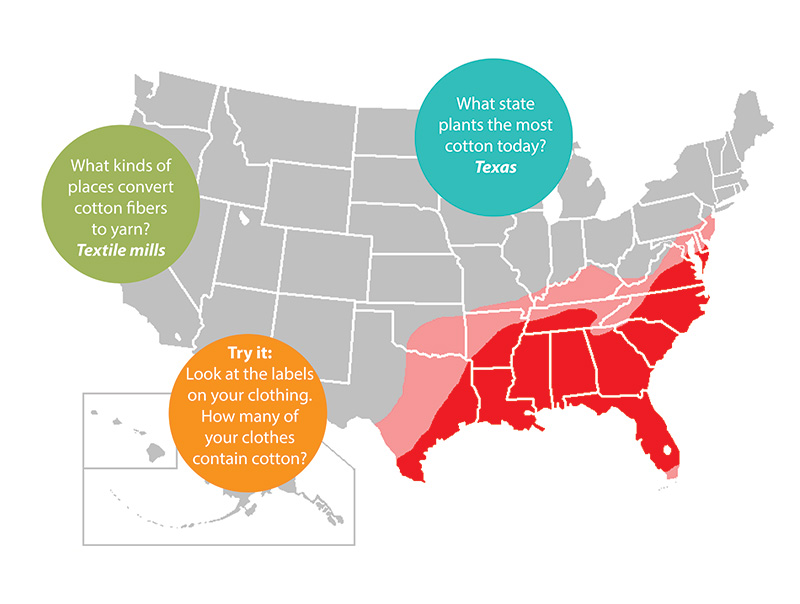
Process Details
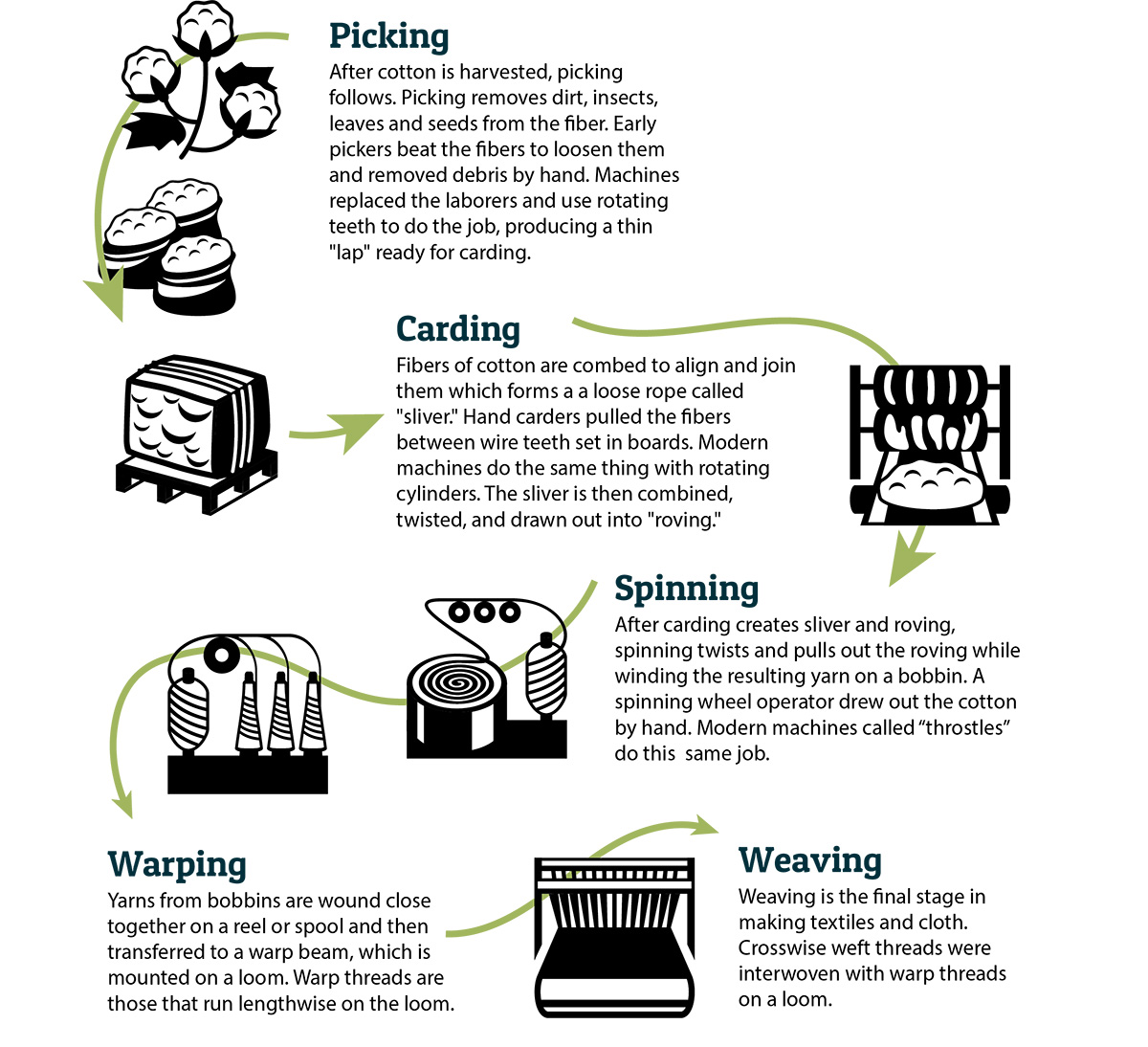
What’s the link between Lewiston, Auburn and cotton?
This answer is easy: The Androscoggin River! Check out a map or take a walk and you will find Lewiston Falls is a location on the river where the power of flowing water is easily seen. At this spot, where the elevation changes and the water’s force is huge as it drops, capturing the energy was possible to provide power to the mills in the earliest days. Smart, early Mainers realized this was THE spot to capture the water’s power to produce energy for mills and built them along the river.
The mills in Maine remained a booming industry for well over 100 years. Even as late as 1948, Maine mills employed 28,000 people and the Bates Mill enjoyed a 100 year anniversary in 1950. However, beginning around this time, the future of mills saw a change; overseas manufacturers were able to apply economic advantages which left American mills unable to operate profitably. American mills lost contracts, cut jobs, and even the original Bates Mill closed in 2001. Today, Maine Heritage Weavers are hard at work, producing a fraction of the products of past days, but continuing the weaving tradition of the historic Bates Manufacturing Company. To learn more about the history of the Bates Mill and the ongoing work of Maine Heritage Weavers, go to click here.
Who made the Textiles?
After the Civil War, in the late 1860s, immigrants moved to mill cities like Lewiston and Auburn in pursuit of work. Many of these workers were French Canadians who came from Quebec and New Brunswick. So popular was this idea, that by the 1950s, 30% of Maine’s population was made up of Franco-Americans. Today, Lewiston continues to reflect this heritage with a significant Franco-American population. The Irish were another major immigrant group who came and worked in the mills and like the French Canadians, their heritage and history is seen in the city today.
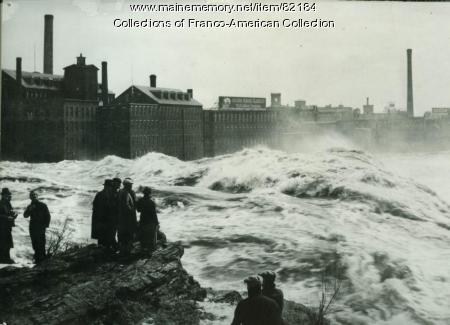
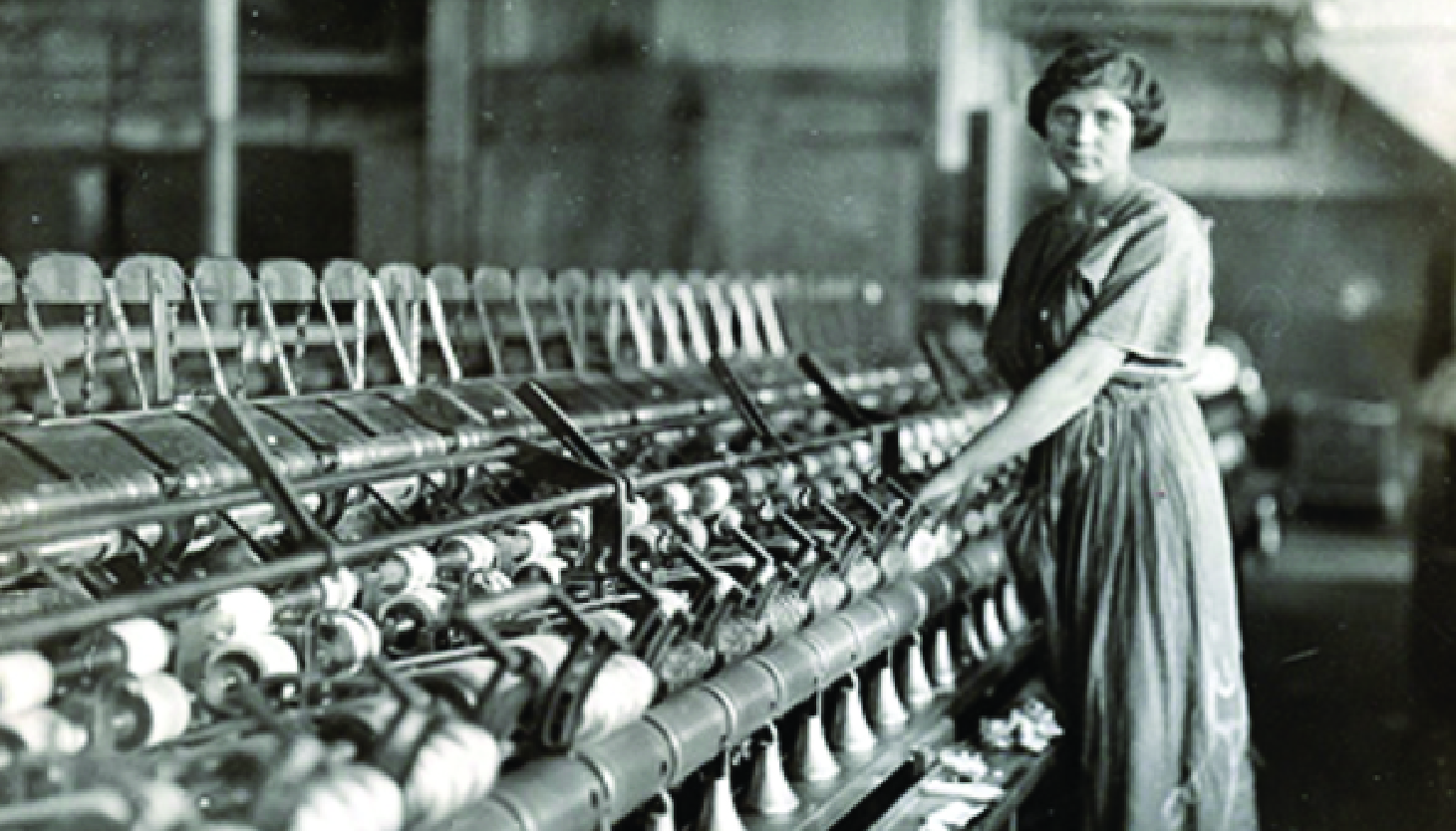
Textiles, Clothing, and Sewing
Today, access to affordable clothing is a basic human need, often taken for granted. Imagine a time before the Jacquard Loom and consider how difficult it was to get textiles or to hand-sew clothing, most of which was done by women at home. The choices in materials were slim and the skill of the seamstress, essential.
Lives have been quite literally changed or shaped by textile materials. Imagine the Revolutionary War soldier who wore clothing stitched at home and not necessarily government-issued, moving through mud and rain. Early explorers crossed the country, surviving or dying as a result of their clothing’s ability to protect them from the elements. Today we can wear breathable, moisture-wicking, flexible “athletic fabrics” that make it easier for all of us to work out, do yoga, or go for a run.
In the 1950s, there was a resurgence in home sewing and textile availability. Most women, and some men, made clothing with ease and regularity at their home machines. The 1970s brought a shift back toward store-bought, ready made fashion and sewing became viewed as more of a chore than a desirable domestic skill. The 2020 COVID Crisis has been a moment when many of us were tasked with locating a textile and testing or developing our sewing skills to make face coverings. This involved evaluating the fabric to ensure it had a tight weave in order to reduce the spread of particles as it was used as a mask. The self-reliance and independence felt by some when we make something from a textile can be heartening during difficult times.
As we look to the future of textiles, MIT and others are rapidly working to include conductive thread and circuits in a woven fabric. These can work to monitor the heart rate, respiration, temperature and overall health of the wearer. This can be like a super-health monitor for athletes, astronauts, or patients.
What might the future hold for textiles used as clothing?
Could they respond to an athlete’s body in real time, providing ventilation as needed? Or, could our clothing report heart rate and respiration to our doctors as we work out?
